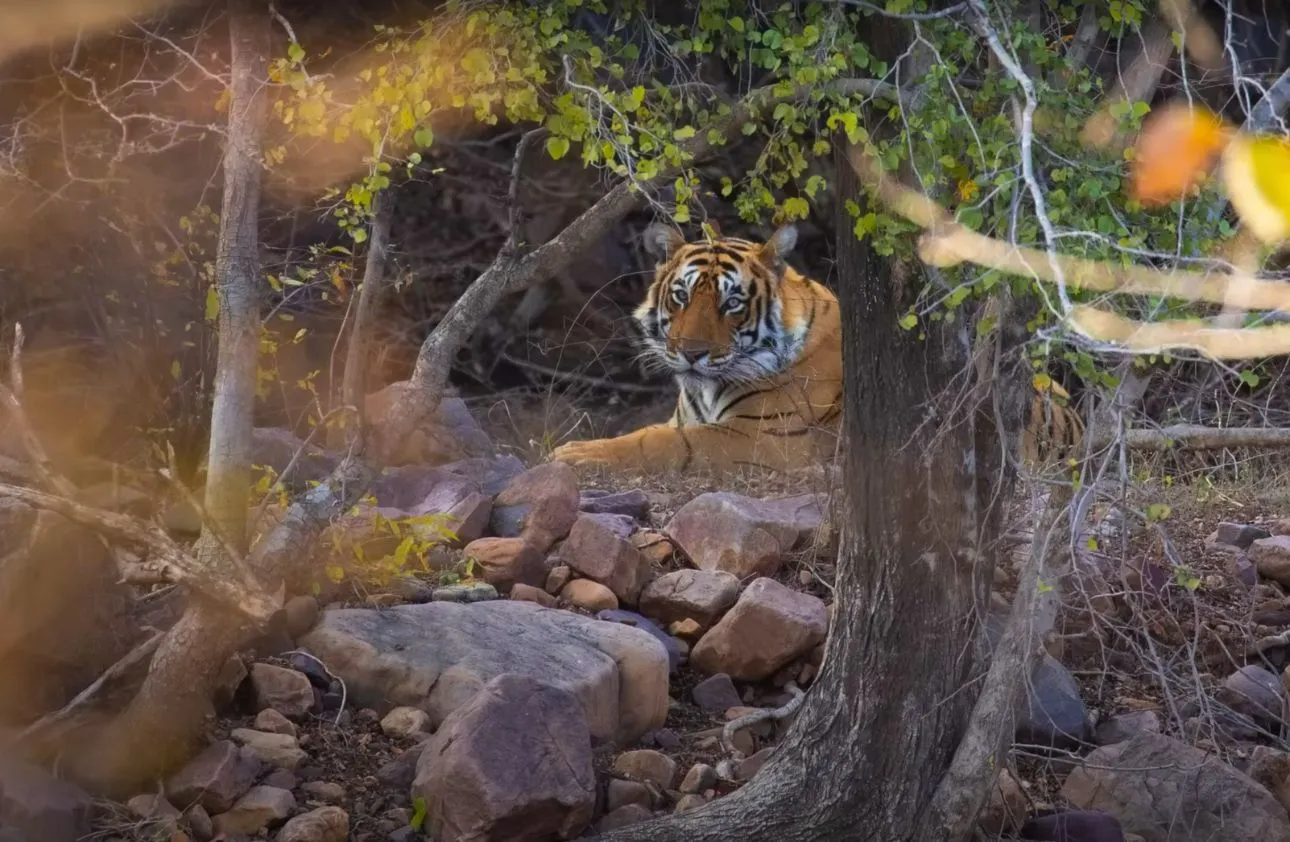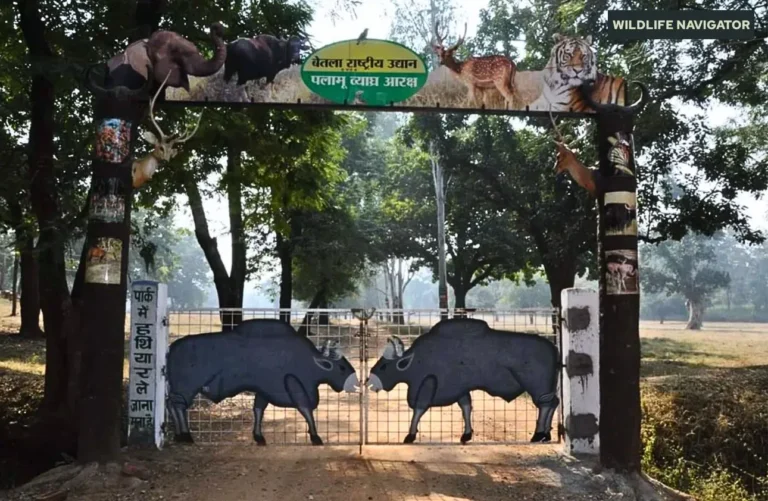Srivilliputhur Megamalai Tiger Reserve: A Wildlife Haven in Tamil Nadu

Srivilliputhur Megamalai Tiger Reserve, located in the southern state of Tamil Nadu, is emerging as a significant hub for wildlife conservation. Declared as a tiger reserve under India’s Project Tiger initiative, it plays a crucial role in protecting the endangered Bengal tiger and maintaining the region’s rich biodiversity. The reserve spans a diverse landscape, featuring dense forests, rolling hills, and freshwater streams, creating an ideal habitat for various species of mammals, birds, and reptiles.
Beyond its wildlife, the reserve also supports several communities living in and around its boundaries, who rely on sustainable forest resources. Its establishment represents a growing commitment to balancing conservation with local livelihoods. The combination of evergreen forests, grasslands, and riverine ecosystems makes the reserve a hotspot for nature enthusiasts, researchers, and eco-tourists.
The reserve is not only important for tiger conservation but also for preserving the ecological integrity of the Western Ghats, a UNESCO World Heritage site. Visitors to the reserve can expect to experience a mix of scenic landscapes and rich wildlife diversity, making it a must-visit destination for anyone passionate about nature and wildlife.
History and Establishment
The Srivilliputhur Megamalai Tiger Reserve (SMTR) was officially declared on February 8, 2021, by the Ministry of Environment, Forest and Climate Change, marking a significant milestone in Tamil Nadu’s conservation efforts. This declaration was followed by the formal approval from the Tamil Nadu government on April 11, 2021, solidifying its status as a protected area under the National Tiger Conservation Authority (NTCA) guidelines.
SMTR was established by merging two existing protected areas: the Srivilliputhur Grizzled Giant Squirrel Wildlife Sanctuary, created in 1988, and the Megamalai Wildlife Sanctuary, which was notified in 1989. This strategic consolidation aimed to enhance the ecological connectivity between these sanctuaries and surrounding reserves, facilitating the movement and genetic exchange of tiger populations across the Western Ghats landscape.
With this addition, Tamil Nadu now boasts its fifth tiger reserve, while India’s 51st tiger reserve. The reserve spans an area of 1,016.57 km², comprising a core area of 641.86 km² and a buffer zone of 374.70 km². Its establishment underscores a concerted effort to protect the Bengal tiger and preserve the rich biodiversity of the Western Ghats region.
Geography and Landscape
The Srivilliputhur Megamalai Tiger Reserve is located in southern Tamil Nadu, spanning parts of Virudhunagar and Theni districts. It forms an important part of the Western Ghats, a global biodiversity hotspot. The reserve’s terrain is diverse, comprising hills, valleys, rivers, and dense forests, creating a mosaic of habitats that support a wide variety of wildlife.
Terrain and Elevation
The reserve is characterised by undulating hills and plateaus, with elevations ranging from 150 meters to over 2,000 meters above sea level. The higher reaches of the Megamalai hills are covered with shola forests and grasslands, while the lower valleys feature tropical dry and moist deciduous forests. These varying terrains contribute to the rich biodiversity found within the reserve.
Rivers and Water Bodies
Several small rivers and streams originate from the Megamalai hills, providing essential water sources for both wildlife and local communities. These water bodies support the lush vegetation of the reserve and create natural corridors for animal movement.
Climate
The climate of the reserve is influenced by both the southwest and northeast monsoons, resulting in a wet season from June to October and a relatively dry period from November to May. The moderate temperatures and high rainfall support dense forest cover and make the reserve a critical habitat for many species, including tigers, elephants, and endemic birds.
The varied landscape of Srivilliputhur Megamalai Tiger Reserve not only provides a sanctuary for wildlife but also offers breathtaking scenic beauty, making it a remarkable destination for eco-tourism and wildlife exploration.
Flora
The Srivilliputhur Megamalai Tiger Reserve is home to a rich and diverse plant life, thanks to its varied terrain and climatic conditions. The reserve’s vegetation plays a crucial role in maintaining the ecosystem, supporting herbivores, pollinators, and other wildlife.
Types of Forests
The reserve contains several forest types that provide unique habitats:
- Shola Forests: Found in higher elevations, these evergreen forests are home to dense undergrowth and a variety of endemic plants.
- Grasslands: Interspersed with the sholas, grasslands provide grazing areas for herbivores like elephants and gaur.
- Tropical Moist Deciduous Forests: Cover the mid-elevation regions and support a wide range of flora and fauna.
- Riparian Vegetation: Found along rivers and streams, helping prevent soil erosion and supporting aquatic life.
Key Plant Species
Some notable plant species in the reserve include:
- Teak (Tectona grandis)
- Indian Rosewood (Dalbergia latifolia)
- Bamboo species (Bambusa arundinacea)
- Wild fig trees (Ficus spp.)
- Evergreen shrubs and medicinal plants
Ecological Importance
The diverse flora not only sustains the herbivore population but also provides shelter and food for tigers, leopards, and other carnivores. Conservation of these plant species is essential to maintain ecological balance and support the reserve’s wildlife.
Fauna
The Srivilliputhur Megamalai Tiger Reserve is a biodiversity hotspot, sheltering a wide array of wildlife. Its diverse habitats—from dense forests to grasslands and riparian zones—support numerous mammals, birds, reptiles, and amphibians.
Tigers and Other Predators
As a tiger reserve, the Bengal tiger (Panthera tigris tigris) is the flagship species of SMTR. Tigers roam the forests and grasslands, benefiting from the reserve’s protected corridors. Other carnivores include:
- Leopard (Panthera pardus fusca)
- Striped hyena (Hyaena hyaena)
- Jungle cat (Felis chaus)
- Dhole or Indian wild dog (Cuon alpinus)
Herbivores and Other Mammals
The reserve’s rich vegetation supports a variety of herbivores, crucial for the food chain:
- Indian elephant (Elephas maximus indicus)
- Gaur or Indian bison (Bos gaurus)
- Sambar deer (Rusa unicolour)
- Nilgiri langur (Semnopithecus johnii)
- Grizzled giant squirrel (Ratufa macroura)
Birds
SMTR is also a haven for bird watchers. Its forests and grasslands attract both resident and migratory species:
- Malabar pied hornbill (Anthracoceros coronatus)
- Crested serpent eagle (Spilornis cheela)
- Black-and-orange flycatcher (Ficedula nigrorufa)
- Great Indian hornbill (Buceros bicornis)
Reptiles and Amphibians
The reserve’s streams, wetlands, and forest floors are home to various reptiles and amphibians:
- Indian cobra (Naja naja)
- King cobra (Ophiophagus hannah)
- Monitor lizards (Varanus spp.)
- Several endemic frogs and toads
The wildlife diversity in Srivilliputhur Megamalai Tiger Reserve highlights its ecological significance. Protecting this fauna is critical not only for tiger conservation but also for maintaining the health and balance of the entire ecosystem.
Best Time to Visit
The ideal time to explore Srivilliputhur Megamalai Tiger Reserve is from November to April, when the weather is pleasant, and wildlife sightings are more frequent. During these months, the temperatures remain moderate, ranging from 15°C to 30°C, making it comfortable for safaris and trekking through the forested areas.
The monsoon season (June to September) brings heavy rainfall, which makes trails slippery and restricts vehicle movement inside the reserve. However, this period can still be rewarding for nature photographers, as the forests become lush and rivers swell with fresh water.
Visitors should plan early morning or late afternoon safaris, as animals are most active during these cooler hours. Carrying binoculars, cameras, and proper hiking gear enhances the wildlife viewing experience. By choosing the right season, travellers can enjoy both the scenic beauty and the diverse wildlife that the reserve has to offer.
Safari and Tourist Experience
Srivilliputhur Megamalai Tiger Reserve offers a variety of experiences for wildlife enthusiasts and eco-tourists. The reserve is designed to allow visitors to explore its rich biodiversity while ensuring minimal disturbance to the animals and their habitats.
Types of Safaris
Visitors can enjoy jeep safaris that cover both the core and buffer zones of the reserve. Guided tours with trained forest officials provide insights into the flora, fauna, and conservation efforts. These safaris increase the chances of spotting Bengal tigers, elephants, leopards, and a variety of other wildlife. For bird watchers, specialised birding safaris are available to explore endemic and migratory species.
Entry Points and Visitor Facilities
The main entry points are located near Srivilliputhur town and Megamalai hills, providing easy access for travellers. Facilities include visitor centres, basic accommodation options, and viewing towers. Forest department guides accompany all safari groups, ensuring safety and informative experiences.
Tips for Tourists
- Arrive early in the morning or late afternoon for optimal wildlife sightings.
- Carry binoculars, cameras, and comfortable clothing.
- Avoid loud noises and littering to preserve the natural habitat.
- Booking safaris in advance is recommended, especially during peak seasons.
A visit to Srivilliputhur Megamalai Tiger Reserve is not just about spotting tigers—it’s about immersing oneself in the pristine wilderness of the Western Ghats, experiencing the serene beauty of its forests, and understanding the importance of wildlife conservation firsthand.
How to Reach Srivilliputhur Megamalai Tiger Reserve
Reaching Srivilliputhur Megamalai Tiger Reserve is relatively convenient, with options via road, rail, and air.
By Air
The nearest airport is Madurai Airport (approximately 120 km) from the reserve. It is well-connected to major cities in India like Chennai, Bengaluru, and Coimbatore. From the airport, visitors can hire a taxi or use private transport to reach the reserve.
By Rail
The closest railway station is Srivilliputhur Railway Station, located around 20 km from the core area of the reserve. Trains from major cities such as Madurai, Chennai, and Coimbatore connect to Srivilliputhur. From the station, local taxis or buses are available to reach the reserve entrances.
By Road
The reserve is well-connected by road networks. National Highway NH-208 passes nearby, making it accessible by private car, taxi, or bus. For those driving from Madurai, the journey takes roughly 3–4 hours, offering scenic views of the Western Ghats along the way.
Travel Tips
- Roads leading to higher elevations in Megamalai can be winding; drive carefully.
- Public transport options are limited within the reserve, so arranging a private vehicle or guided tour is recommended.
- Early morning departures maximise wildlife spotting opportunities.
With proper planning, reaching Srivilliputhur Megamalai Tiger Reserve is straightforward, allowing visitors to enjoy a seamless and immersive wildlife experience.
Accommodation
Srivilliputhur Megamalai Tiger Reserve offers a range of accommodation options for visitors, from basic forest lodges to comfortable resorts, allowing travellers to choose according to their preferences and budget.
Forest Department Lodges
The Tamil Nadu Forest Department operates a few eco-friendly lodges within or near the buffer zone of the reserve. These lodges provide basic amenities, including clean rooms, meals, and guided safari arrangements. Staying here gives visitors direct access to the reserve and an authentic wildlife experience.
Private Resorts and Homestays
Several resorts and homestays are available in nearby towns like Srivilliputhur and Megamalai. These establishments offer modern comforts such as Wi-Fi, private cottages, and scenic views of the Western Ghats. Some resorts also organise guided treks, nature walks, and bird-watching tours.
Tips for Booking
- It’s advisable to book in advance, especially during peak seasons (November to April).
- For a more immersive experience, choose lodges or cottages close to the core or buffer areas of the reserve.
- Some accommodations may offer packages that include safari permits, local guides, and meals.
Staying overnight near the reserve enhances the wildlife experience, allowing visitors to explore the forests during early morning and late evening hours when animals are most active.
Conservation Efforts
Srivilliputhur Megamalai Tiger Reserve is not only a sanctuary for wildlife but also a centre for active conservation initiatives aimed at protecting tigers and maintaining ecological balance.
Anti-Poaching Measures
The reserve is equipped with patrolling teams and surveillance systems to prevent poaching and illegal logging. Forest guards conduct regular inspections of core and buffer areas, and checkpoints are established at strategic locations to monitor movement. These measures help safeguard tigers, elephants, and other vulnerable species.
Community Involvement
Local communities play a vital role in conservation. Initiatives include awareness programs, eco-tourism projects, and sustainable livelihood schemes such as guided nature tours or handicraft sales. These programs foster cooperation between residents and the forest department, ensuring long-term protection of the reserve.
Research and Monitoring
Continuous wildlife monitoring using camera traps, GPS collars, and field surveys allows researchers to track tiger populations and study behaviour patterns of other species. The data collected informs management strategies and habitat restoration efforts.
Habitat Restoration
Afforestation projects, protection of riparian zones, and control of invasive species are actively carried out to maintain the health of forests and grasslands. These measures ensure that herbivores and carnivores alike have sufficient resources for survival.
Through these combined efforts, Srivilliputhur Megamalai Tiger Reserve serves as a model for sustainable conservation, demonstrating how protection, research, and community engagement can work together to secure the future of India’s wildlife.
Nearby Attractions
Srivilliputhur Megamalai Tiger Reserve is surrounded by a variety of attractions that make the visit even more rewarding for travellers.
Srivilliputhur Andal Temple
Located in Srivilliputhur town, this historic temple is dedicated to Goddess Andal and is renowned for its towering gopuram and intricate carvings. It is one of the Divya Desams, attracting devotees from across the country.
Megamalai Hills
The scenic Megamalai hills, part of the reserve, offer trekking trails, tea plantations, and viewpoints overlooking the Western Ghats. Early morning treks provide opportunities to spot wildlife and experience mist-covered landscapes.
Grizzled Squirrel Wildlife Sanctuary
Situated nearby, this sanctuary is home to the endangered grizzled giant squirrel and offers nature trails for birdwatchers and wildlife enthusiasts.
Waterfalls and Scenic Spots
Several waterfalls and streams flow through the hills, including Shenbagadevi and Periyar falls, offering ideal spots for photography and picnics.
Exploring these nearby attractions alongside the tiger reserve allows visitors to combine wildlife adventure, cultural experiences, and natural beauty in a single trip.
Conclusion
Srivilliputhur Megamalai Tiger Reserve is quickly becoming one of Tamil Nadu’s most important wildlife destinations. By protecting tigers, elephants, and numerous other species, the reserve plays a crucial role in maintaining the ecological balance of the Western Ghats. Its diverse landscapes—from shola forests and grasslands to rivers and hills—offer a sanctuary not only for wildlife but also for researchers, nature enthusiasts, and eco-tourists.
Visitors to the reserve have the opportunity to experience the beauty of India’s wilderness up close, while also contributing to ongoing conservation efforts by supporting responsible tourism. With guided safaris, trekking trails, and nearby cultural and natural attractions, the reserve provides a complete wildlife experience.
As India continues its efforts to safeguard tigers and biodiversity, Srivilliputhur Megamalai Tiger Reserve stands as a symbol of conservation success, demonstrating the importance of protecting natural habitats for future generations while encouraging people to reconnect with the wonders of the natural world.





